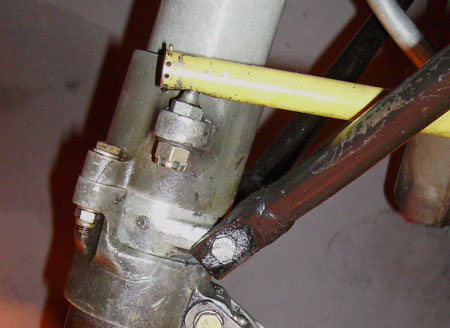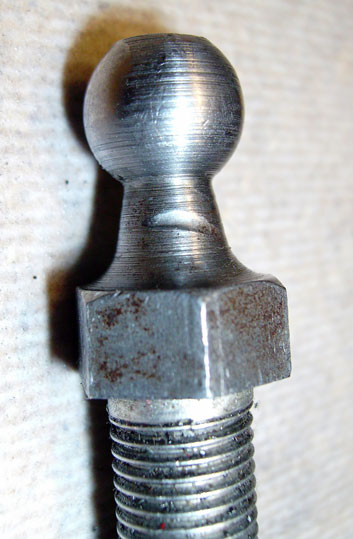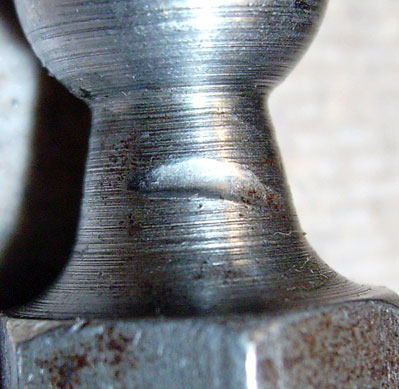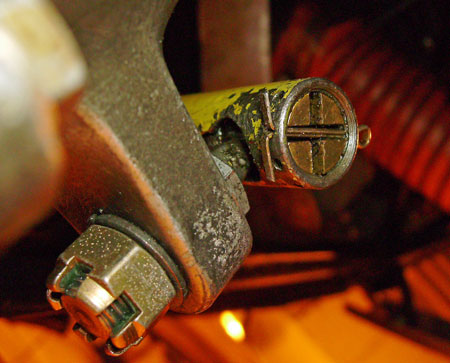The steering socket ball
The Ercoupe's unique feature is that you can steer it without rudder pedals. But the steering forces have to be applied to the steering collar.

This is done with a special push rod that pushes and pulls on a steering socket ball like the one below.
Now, many planes are using pushrods for steering, but in a Coupe the steering action is not much supported by the rudder. All the forces needed to control the plane on the ground are acting on the front wheel. The steering pushrod is the only way to supply the forces needed. However, this is a recognized weak point in the whole control design.
 Skyport (Univair?) recognized the problem and brought out the Improved Steering Joint Ball Kit. (This unit replaces part number 34074-2 socket Ball Stud).
Skyport (Univair?) recognized the problem and brought out the Improved Steering Joint Ball Kit. (This unit replaces part number 34074-2 socket Ball Stud).
This kit consists of a new rod-end bearing and all necessary hardware. To use it, you also need to purchase part number 52035 push-rod that has the male threaded stud.
At the time of the writing this sets you back $250 plus the costs for labor and shipping.
The installation of this upgrade is agreed to be the best thing one can do to improve the safety of the steering connection, but not everyone is willing to spend that kind of money fixing a thing that is not obviously broken. Also it diverts the weak point from the steering joint ball to the steering collar. Now the bolt does not give when overloaded, but the steering collar, replacing one evil with another.
So what if you don't want to convert the steering to the newer kind and are planning to get along with the proven system of over 60 years?

Very simple. Have your mechanic carefully examine the steering socket ball at your next annual, or have him replace it with a new one anyway. This is an investment of around 10 bucks that are very well spent.
Why? Have a look at the picture on the right.
This steering ball served successful over some sixty years I assume. Over that time the steering rod end was allowed to rub at the ball and cut right in into the steel material. Cuts like this are not easily detected because they are small and you barely can feel them with your finger, but you will see it when you know what to look for.
A cut like this creates a weak point where the socket will snap off under great load.
I have heard reports on failing socket balls and I believe that these balls were cut in a similar fashion, maybe worse.
Fixating the steering rod in a position where it can rub on the ball shaft has the pictured outcome.
So it is a good idea to replace this socket ball and verify that the steering push-rod is clear of that ball shaft throughout the whole steering sequence.

When reinstalling the pushrod make sure the rods opening does not touch the socket ball in any steering position.

Hartmut